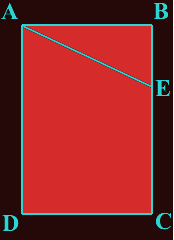Events & Promotions
|
|

GMAT Club Daily Prep
Thank you for using the timer - this advanced tool can estimate your performance and suggest more practice questions. We have subscribed you to Daily Prep Questions via email.
Customized
for You
Track
Your Progress
Practice
Pays
Not interested in getting valuable practice questions and articles delivered to your email? No problem, unsubscribe here.
- Nov 20
07:30 AM PST
-08:30 AM PST
Learn what truly sets the UC Riverside MBA apart and how it helps in your professional growth - Nov 22
11:00 AM IST
-01:00 PM IST
Do RC/MSR passages scare you? e-GMAT is conducting a masterclass to help you learn – Learn effective reading strategies Tackle difficult RC & MSR with confidence Excel in timed test environment - Nov 23
11:00 AM IST
-01:00 PM IST
Attend this free GMAT Algebra Webinar and learn how to master the most challenging Inequalities and Absolute Value problems with ease. - Nov 25
10:00 AM EST
-11:00 AM EST
Prefer video-based learning? The Target Test Prep OnDemand course is a one-of-a-kind video masterclass featuring 400 hours of lecture-style teaching by Scott Woodbury-Stewart, founder of Target Test Prep and one of the most accomplished GMAT instructors.
Kudos
Bookmarks
B
Be sure to select an answer first to save it in the Error Log before revealing the correct answer (OA)!
Difficulty:
 65%
(hard)
65%
(hard)
Question Stats:
55% (01:53) correct 45%
(01:39)
wrong
45%
(01:39)
wrong  based on 896
sessions
based on 896
sessions
History
Date
Time
Result
Not Attempted Yet
Given that ABCD is a rectangle, is the area of triangle ABE > 25?

(Note: Figure above is not drawn to scale).
(1) AB = 6
(2) AE = 10

Rectangle.PNG [ 2.86 KiB | Viewed 78815 times ]
How come the answer is B and not C? Can someone please explain?
PS: I tried the jpeg and bitmap format to attach the picture, but it says these two formats are not supported. Therefore attached the .pdf.
(Note: Figure above is not drawn to scale).
(1) AB = 6
(2) AE = 10
Attachment:
Rectangle.PNG [ 2.86 KiB | Viewed 78815 times ]
PS: I tried the jpeg and bitmap format to attach the picture, but it says these two formats are not supported. Therefore attached the .pdf.
Kudos
Bookmarks
Given that ABCD is a rectangle, is the area of triangle ABE > 25? (Note: Figure above is not drawn to scale).

Rectangle.PNG [ 2.86 KiB | Viewed 78344 times ]
\(Area=\frac{1}{2}*AB*BE\)
(1) AB = 6 --> clearly insufficient: BE can be 1 or 100.
(2) AE = 10 --> now, you should know one important property: for a given length of the hypotenuse a right triangle has the largest area when it's isosceles, so for our case area of ABE will be maximized when AB=BE. So, let's try what is the largest area of a right isosceles triangle with hypotenuse equal to 10. Finding legs: \(x^2+x^2=10^2\) (where x=AB=BE) --> \(x=\sqrt{50}\) --> \(area_{max}=\frac{1}{2}\sqrt{50}^2=25\). Since it's the maximum area of ABE then the actual area cannot be more than 25. Sufficient.
Answer: B.
Attachment:
Rectangle.PNG [ 2.86 KiB | Viewed 78344 times ]
(1) AB = 6 --> clearly insufficient: BE can be 1 or 100.
(2) AE = 10 --> now, you should know one important property: for a given length of the hypotenuse a right triangle has the largest area when it's isosceles, so for our case area of ABE will be maximized when AB=BE. So, let's try what is the largest area of a right isosceles triangle with hypotenuse equal to 10. Finding legs: \(x^2+x^2=10^2\) (where x=AB=BE) --> \(x=\sqrt{50}\) --> \(area_{max}=\frac{1}{2}\sqrt{50}^2=25\). Since it's the maximum area of ABE then the actual area cannot be more than 25. Sufficient.
Answer: B.
Kudos
Bookmarks
nglekel
Hi, and welcome to GMAT Club.
Unfortunately your reasoning is nor correct.
You assume with no ground for it that the lengths of the sides are integers. Knowing that hypotenuse equals to 10 DOES NOT mean that the sides of the right triangle necessarily must be in the ratio of Pythagorean triple - 6:8:10. Or in other words: if \(a^2+b^2=10^2\) DOES NOT mean that \(a=6\) and \(b=8\), certainly this is one of the possibilities but definitely not the only one. In fact \(a^2+b^2=10^2\) has infinitely many solutions for \(a\) and \(b\) and only one of them is \(a=6\) and \(b=8\).
For example: \(a=1\) and \(b=\sqrt{99}\) or \(a=2\) and \(b=\sqrt{96}\) or \(a=4\) and \(b=\sqrt{84}\) ...
Hope it's clear.













